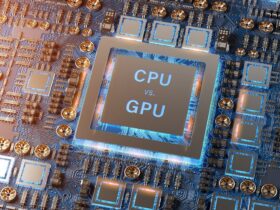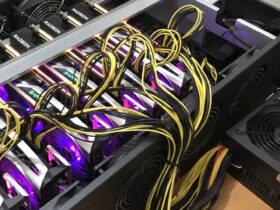Daftar Isi
When it comes to building or upgrading a PC, the power supply unit (PSU) often takes a back seat to more glamorous components like processors and graphics cards. However, neglecting PSU safety can have serious consequences for your system’s stability, longevity, and even your personal safety. In this article, we delve into two critical aspects of PSU safety: surge protection and voltage regulation.
Surge Protection: Shielding Against Voltage Spikes for PSU Safety
Understanding Voltage Surges
Voltage surges, also known as power spikes or transients, pose a significant threat to electronic devices. These sudden increases in voltage can occur due to lightning strikes, utility grid switching, or even faulty appliances within your home. When a surge enters your PC through the power supply, it can wreak havoc on sensitive components like motherboards, CPUs, and storage drives.
How Surge Protection Works
In today’s digital age, where our lives are increasingly dependent on electronic devices, protecting them from unexpected power surges is paramount. Power surges, caused by voltage spikes or sudden fluctuations in the electrical grid, pose a significant risk to our valuable electronics. However, modern power supply units are equipped with advanced surge protection mechanisms to shield our devices from harm. Let’s delve into how surge protection works and why it’s essential for safeguarding your electronics:
Metal Oxide Varistors (MOVs)
Metal Oxide Varistors, or MOVs, serve as the backbone of surge protection in most modern Power Supply. These small yet mighty components act as voltage-sensitive resistors. When a power surge occurs, the MOVs detect the excess voltage and divert it away from the connected equipment, thereby preventing damage.
By absorbing the energy from the surge, MOVs ensure that sensitive electronic components, such as motherboards, processors, and storage devices, remain unharmed. This proactive approach to surge protection is crucial for maintaining the integrity and longevity of your electronic devices.
Transient Voltage Suppression (TVS) Diodes
In addition to MOVs, many Power Supply employ Transient Voltage Suppression (TVS) diodes to bolster surge protection. TVS diodes offer a rapid response to voltage spikes, providing an alternative path for excess voltage to dissipate harmlessly.
By swiftly shunting the energy away from critical components, TVS diodes play a pivotal role in mitigating the impact of power surges on electronic devices. Their ability to react quickly to transient voltage events ensures enhanced protection against potential damage.
Surge Protection Standards
When selecting a PSU for your electronic devices, it’s essential to prioritize models that comply with international surge protection standards, such as IEC 61000-4-5. These standards establish stringent surge immunity levels and ensure that Power Supply can withstand common voltage surges encountered in everyday usage.
By adhering to recognized surge protection standards, Power Supply manufacturers demonstrate their commitment to delivering reliable and robust surge protection solutions. Investing in a Power Supply that meets these standards provides you with peace of mind, knowing that your electronics are shielded from the adverse effects of power surges.
Read More: PSU Cable Management: Tips for a Clean Build
Voltage Regulation: Keeping Things Stable
The Importance of Voltage Stability
In the intricate ecosystem of your PC’s components, one silent guardian stands out: the Power Supply Unit. At the heart of its responsibilities lies a critical task: voltage regulation. But what exactly does voltage regulation entail, and why is it indispensable for the health and performance of your system? Let’s delve into the pivotal role that voltage regulation plays:
Consistent and Accurate Voltages
Voltage regulation ensures that your Power Supply delivers consistent and accurate voltages to your PC’s components, such as the CPU, GPU, and motherboard. These components rely on specific voltage levels (+12V, +5V, +3.3V) to function optimally.
By maintaining precise output voltages, a well-regulated Power Supply ensures that each component receives the power it requires, eliminating the risk of overloading or underperforming. This stability is fundamental for preventing system instability, crashes, and potential hardware damage.
Excellent Load Regulation
A hallmark of quality PSUs is their exceptional load regulation capabilities. Load regulation refers to the PSU’s ability to adjust its output voltages dynamically, even as the power demand fluctuates.
With excellent load regulation, the PSU can adapt swiftly to changes in load, ensuring that the output voltages remain within tight tolerances. This responsiveness guarantees stable and reliable power delivery to your PC’s components under varying workloads.
Efficiency and Heat Management
Efficient voltage regulation goes hand in hand with reduced energy wastage, leading to lower heat generation within the PSU. Cooler operating temperatures not only contribute to the PSU’s longevity but also benefit the overall system.
By minimizing heat buildup, efficient voltage regulation helps to prolong the lifespan of your PC’s components. Cooler components are less prone to thermal stress and are more likely to operate reliably over extended periods.
Conclusion
PSU safety isn’t just about preventing electrical fires; it’s about safeguarding your entire system. Surge protection shields against external threats, while voltage regulation ensures internal stability. When choosing a PSU, prioritize safety features to keep your PC running smoothly and protect your valuable hardware.


































